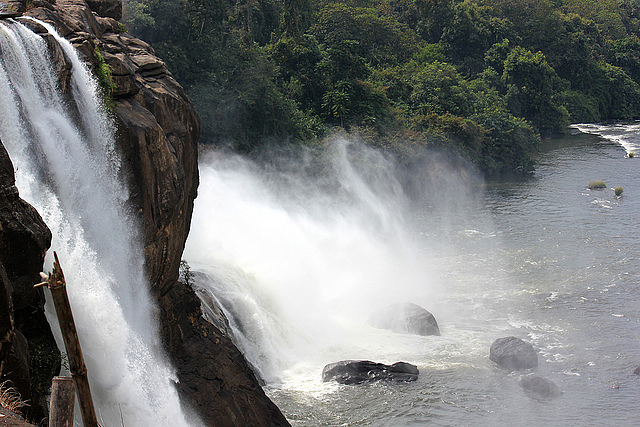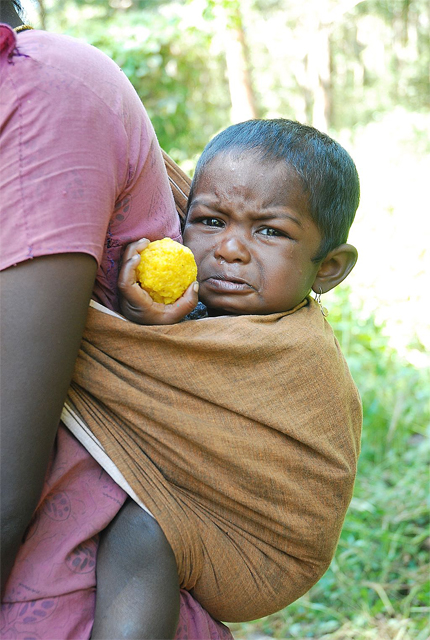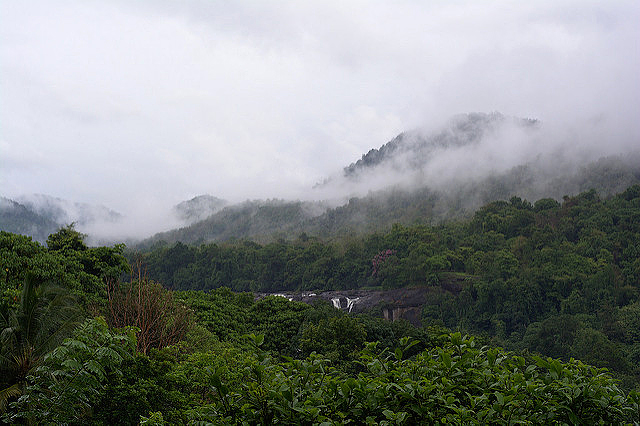The government of Kerala has made it clear that they do not plan to give up on the Athirappilly project, despite opposition from experts, conservationists and the local Kadar people. A news report last week in The Hindu, one of India’s leading newspapers, described the latest government maneuvers that they hope will result in damming the Chalakudy River to produce 163 megawatts of power.

According to the report, the state Electricity Minister M. M. Mani told the state Legislative Assembly that the government was proceeding to acquire the land necessary for the project. In reply to a question, the minister said that the government was considering 15 different hydroelectric generating projects, one of which is the Athirappilly. It is located immediately above the famed Athirappilly Waterfall, and the diversion of water from the river will have a severe impact on the falls, which attract around one million tourists per year.
The newspaper reported that the Communist Party of India (CPI), now in opposition to the government, is opposed to the project along with the leader of the opposition, Mr. Ramesh Chennithala from the United Democratic Front. Mr. Chennithala wrote to the Chief Minister of the state to discuss his opposition to the project and the enormous harm it would cause.

Although Electricity Minister Mani announced that the government is going to investigate solar, wind, and thermal generation projects to satisfy the increasing demands for electricity in the state, the opponents were not sympathetic. In addition to opposition from the local Kadar communities, The Hindu said that a couple reports had expressed reservations about the development. The project would submerge more than 140 hectares of forest, pretty much destroy the magnificent waterfalls, and cost more than 15 billion Indian rupees (US$225,000,000), a five-fold increase above the projected cost a decade ago.
Many of the news stories in this website over the past 11 years about the Kadar have focused on the on-again, off-again Athirappilly Dam proposal. Indian environmentalists and human rights activists have repeatedly expressed their opposition to harming the vulnerable indigenous communities as well as the forest homes of hornbills, tigers, and elephants. The Kadar themselves have demonstrated peacefully for their rights.
But it would be useful to step back from the seemingly endless controversy and look at one of the major ethnographies of the people, Ehrenfels’ 1952 book Kadar of Cochin, to see what the river really meant to the indigenous people before the urge to destroy the river invaded their territory.

In the course of setting the scene for his book, Ehrenfels, described the Kadar living in the forests along the Chalakudy River, apparently quite near the site of the controversial dam proposal. He captured the values of the Kadar when he wrote (p.16) that they appreciate the fullness of life in the forest, “from the tiniest fly-catcher to trumpeting elephants, enjoying their evening bath; from the squeaking of night-birds and bats or the shrieking of a frightened deer to the deep growl of a tiger.”
He continued that the Kadar not only hear and see the animals of the forest, they also smell them. And, he wrote, the people often experience the sense that something in the forest is watching them, and when they look around, they discover that indeed a large animal is staring back at them. The Kadar, he concluded, realize that “the tropical forest is alive, and it teaches that life is one great enigma (p.16).”